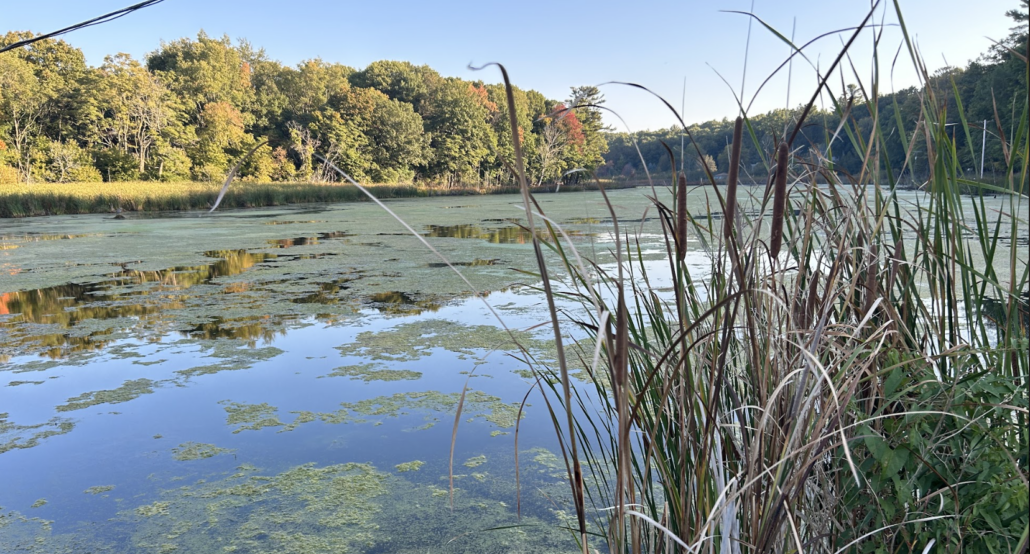By: Samantha Rypstra, WMEAC Lakeshore Fellow
Good memories of time near the water, lots of fish, and lots of wildlife are things mentioned by local residents who remember the Sadony Bayou in White River Township in the northern part of Muskegon County as it once was years ago. But at present, these are just memories that serve as motivation to restore the bayou to its former state. Those close to the restoration efforts have an exciting new breakthrough thanks to recently announced grants from the Michigan Department of Environment, Great Lakes and Energy (EGLE). The EGLE grants, totaling over $600,000, were created for the purpose of improving the health of the state’s watersheds. Thanks to one of these grants and a concerned group of community members, a healthy Sadony Bayou may soon be back!
The community members, the Chemours Environmental Impact Committee (CEIC, pronounced “seek”) make up a group formed to advocate for the cleanup of groundwater and soil contamination right in their own neighborhoods, the former DuPont Montague Works site, now owned by The Chemours Company. WMEAC has been a big fan of CEIC’s efforts, and has assisted the group when possible. We are glad to see their recent collaboration with restoration biologist Dr. Marty Holtgren, the Muskegon Conservation District, Grand Valley State University and the Muskegon County Water Resources Commissioner. The group will be using the recently awarded grant from EGLE as a way to get started restoring Sadony Bayou.
Sadony Bayou is a coastal wetland which stretches 11 acres; its waters flow into White Lake and eventually out to Lake Michigan. It was once home to a diverse range of plants and animals, including thriving bass and northern pike populations. Unfortunately, the bayou is far from the place it used to be, with potential impacts from runoff from agriculture upstream, periods of low flow, and contamination from the Dupont site, where products such as Neoprene, acetylene, and Freon were made.
Today, representatives of CEIC call the bayou “a shadow of its former self,” claiming it no longer has diverse and thriving wildlife populations and that people no longer interact with the watershed as they once did. In addition, in all the passing time there have been limited attempts to gather data to understand the state of the bayou, until now.
In 2022, Claire Schlaff, a leader of CEIC, was interviewing folks who lived near the bayou, and became motivated not only to bring attention to the history of the site, but to restore it. She reached out to a longtime friend, Dr. Marty Holtgren, and they worked with a group of stakeholders to write the grant. Another partner, the Muskegon Conservation District, submitted the grant to EGLE with the intent that the study would characterize the current status of the bayou and come up with strategies to restore it. “When I met members of CEIC I was hooked, ” Hotgren said. “They were organized, committed, had done research, and showed resolve for improving the bayou. For writing the proposal, I simply sat down with CEIC members and we started writing…figuring out what information was needed, the partners, and the grant outcomes.” According to Holtgren, the grant totals over $36,000 and will fund a study “…to establish a baseline data set of chemical, physical, and biotic conditions for Sadony Bayou and the adjacent Pierson Creek. . . Until we understand water quality degradations and their impacts” he said, “we are limited in knowing our options. At [the] grant end we will have the information needed to start developing a design that is both scientifically and community supported.”
The grant-funded study will be completed within a year and serve as a starting point for the development of a restoration plan that best fits the site. CEIC members plan to pursue additional grants and funding beyond the initial project.
The end goal according to Holtgren is “ . . . a fully functioning and vibrant bayou with good water quality, diverse and abundant fish, wildlife and plants, and a local community that has a bayou to treasure.”
Those who are familiar with the site and passionate about restoring it believe the project will be a beneficial kickstart, gathering crucial information about the state of the site so that it can be restored to a place the community and wildlife can utilize. The protection and restoration of Sadony Bayou may also have a positive impact and ripple effect on the rest of the surrounding watersheds, as well as Lake Michigan.
CEIC will be hosting public meetings to present information on the project and gather community feedback. Next year they will organize volunteers to help assess the habitat and insects in the bayou. To get involved, email makeitrightchemours@gmail.com or visit Make it Right Chemours on Facebook.
I feel that projects like this one are so important, especially on the West Michigan lakeshore where the watersheds we live in are connected within the unique and valuable Great Lakes watershed. The creeks, rivers, wetlands, and smaller lakes that connect with Lake Michigan should be places with clean water quality, abundant fish, plants and other aquatic wildlife. These bodies of water should also be places that Michiganders can freely enjoy, places for people to boat, swim, fish and connect with nature. EGLE, the Muskegon Conservation District and other entities are doing important work to protect Michigan’s natural resources, but the commitment of people in their communities, groups like CEIC, stepping up to take care of their environment are important to acknowledge as well. It is impressive what can be accomplished when groups of people use their common concerns as motivation to do important work. Are there environmental concerns where you live? If so, what steps can you take to prevent or reverse them? Look no further than CEIC – it is an inspiring model for individuals and groups who want to take a larger role in cleaning up and preventing pollution in their own communities!


